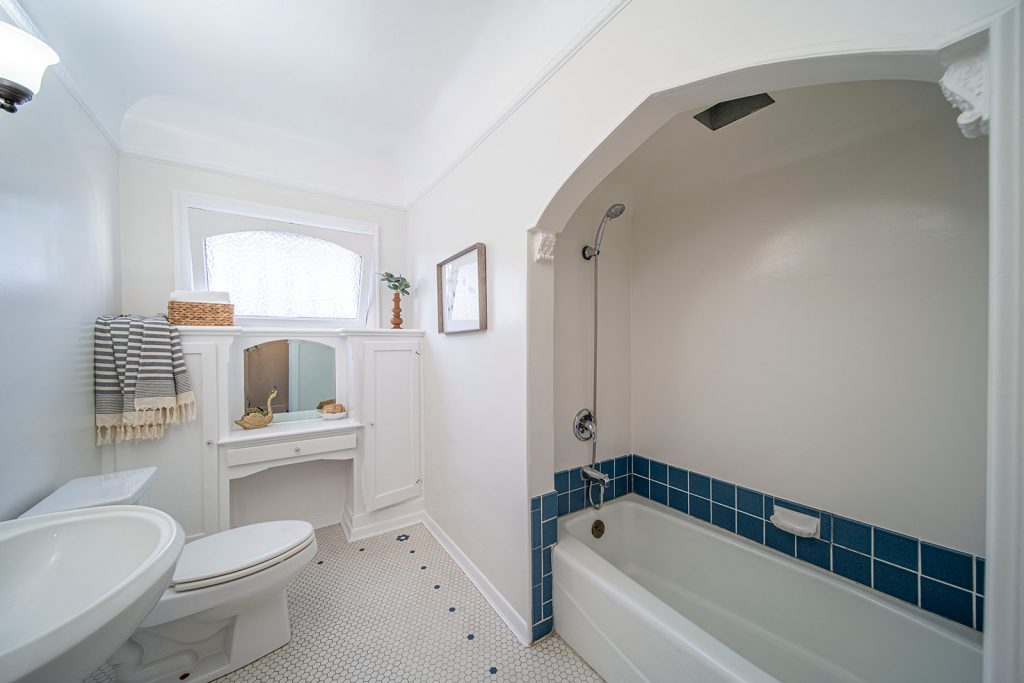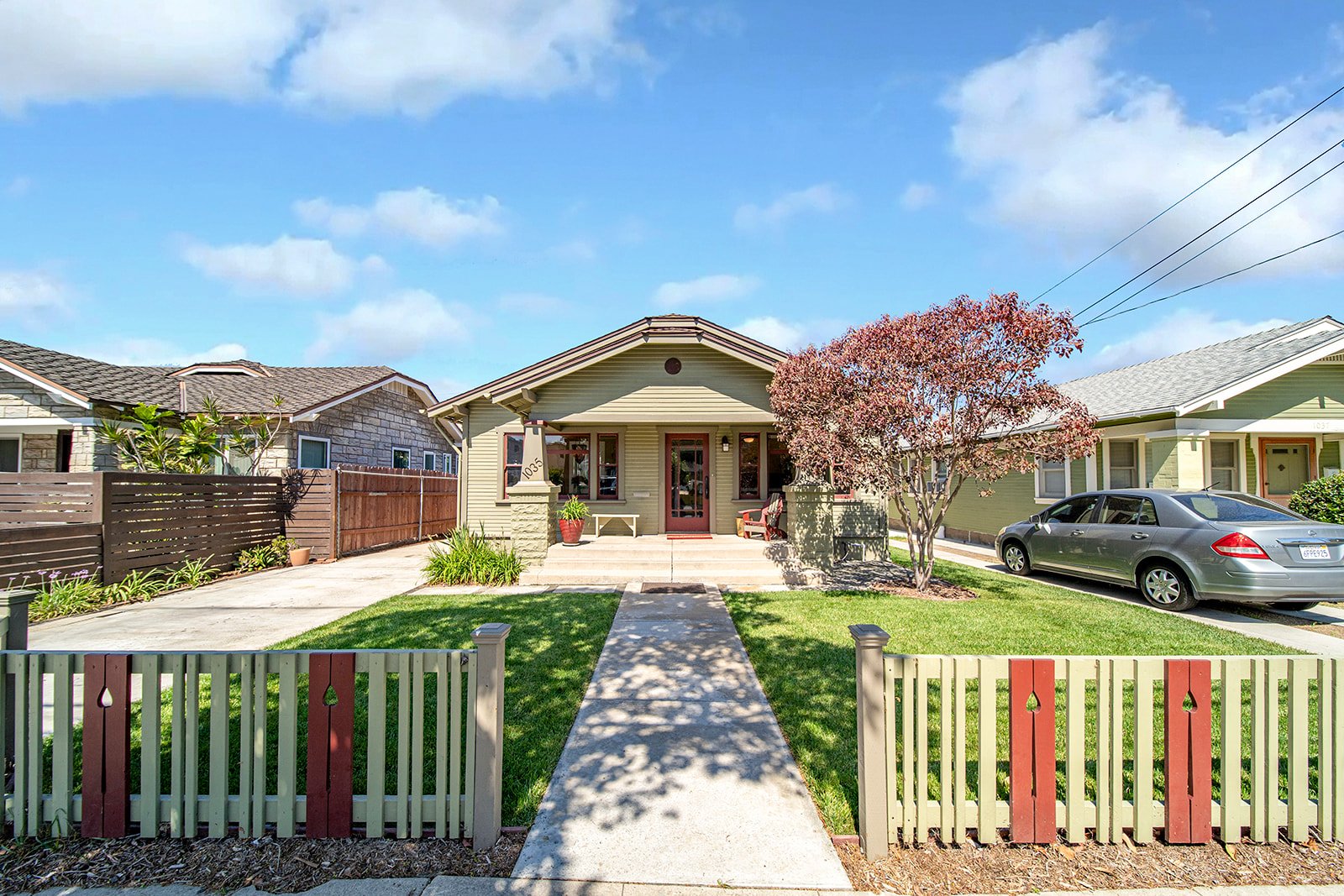Historic homes and homes in Long Beach historic districts, in general, are hot commodities. Historic homes are definitely romanticized and it’s easy to see why. There is a charm to them that you just can’t find in newer homes. However, before you buy a historic home, it’s important you understand the rules that come with them. For instance, there are guidelines regarding exterior painting and other changes to these homes.
Long Beach takes great pride in its history and its historic homes. So historic neighborhoods and the City of Long Beach work together to preserve them. Unfortunately, this means you can’t just make any changes you want. Some people are okay with this but others are not. So it’s important you understand what you’re getting into before you make a purchase. Here’s a guide to Long Beach Historic Districts and what it takes to do an exterior paint job in a historic home.
First, learn a little bit about some of Long Beach’s historic districts in the video below.
Long Beach Historic Districts
Long Beach currently has 18 historic districts that contain older homes. On their own, they can’t be designated historic landmarks. However, collectively they are worthy of preservation status. A neighborhood with non-historic structures can still qualify for historic district status if at least 2/3 of the houses are original older homes. Long Beach’s historic districts are as follows.
- Belmont Heights
- Bluff Park
- California Heights
- Hellman Street Craftsman
- Rose Park
- Rose Park South
- Wrigley Area
- Brenner Place
- Eliot Lane
- Minerva Place
- Wilton Street
- Drake Park / Wilmore City
- Lowena Drive
- Sunrise Boulevard
- Bluff Heights
- Carroll Park
- Linden Avenue
- Grant Neighborhood
What is Historic Preservation?
Historic preservation is the act of legally designating a property or neighborhood as historic. These neighborhoods and homes need to meet specific criteria for age and historical relevance. Once designated historic, the neighborhood is protected by certain regulations. This includes requiring homeowners to maintain the structural quality and integrity of their homes.
The Long Beach Cultural Heritage Commission uses design guidelines to help protect Long Beach’s historic homes. Known as The Secretary of the Interior’s Standards for the Treatment of Historic Properties, these guidelines apply to the exterior of the home.

This is a classic example of an original, but updated bathroom in Long Beach. The built-ins along with the hexagonal floor tiles and the arch above the tub were staples in old homes.
Steps to Make Any Changes to a Long Beach Historic Home
Depending on what modifications you want to make to your home, the process can be long. Here is a general overview of the process.
Step One – Certificate of Appropriateness
First, start at the City of Long Beach’s official website with a Certificate of Appropriateness. This document is required for all exterior changes even if you do not need a permit. However, it excludes ordinary repair and maintenance. The application for the certificate of appropriateness is online through the Historic Preservation Office. If you contact them before or during your paint selection process they will make suggestions and help facilitate the approval process. Be sure to read the application thoroughly before you start your paint selection. There are very specific colors and color combinations that are allowed based on the architectural style of your home.
Step Two – Paint Selection
Craftsman/Bungalow
Craftsman and Craftsman bungalows are typically painted in color schemes of 3 to 5 colors. Generally, the base color is a dark earth tone like green or brown. The trim should be a lighter earth tone like a beige or tan. The window frames and rafter tails may have third color closer in shade to base color. Mixing these color palettes may be acceptable on a case-by-case basis.
Want to take a video tour of a Craftsman Bungalow? Click here!

This home is a classic example of Craftsman Bungalow architecture.
Prairie
Prarie-style homes are typically painted in color schemes of 3 colors. The base should be a light to medium earth tone. Usually, this will be a variant of brown. If the base is brick, it should be left exposed. The trim colors usually contrast the base and window frames can be painted in third color such as maroon.
Spanish/Mission
Typically, Spanish or Mission homes are painted in white, off-white, or a light brown hue with a second trim color. Sometimes a third color is used on window frames, like a blue, red, or green variant.
Tudor/English Revival
Generally, Tudor and English Revival homes are painted in color schemes of 3 colors. The base is usually a light earth tone and the trim should contrast the base color. Window frames on these homes tend to be dark colors.
Art Deco/Streamline Art Deco
Art Deco homes favor bright, bold colors. Sometimes they are painted in a pastel color with a darker color for the base. Metallic colors are usually used on windows and doors. Meanwhile, Streamline Art Deco homes are usually subdued colors. The base can be a light earth tone like off-white or light grey. The trim is usually bright.
View this post on Instagram
Step Three – Complete the Application
Finally, complete the application for The Certificate of Appropriateness. You will need to include a photo of the exterior of your house, and samples of the paint you selected. It is helpful if you photograph the sample on your house in the areas you want the paint. Then submit your application to the city.
If you have selected colors from a historic collection then the turn-around time at the city is very quick. However, the process will take longer if you do not select historic colors or want to do major changes. In that case, you have to schedule a meeting for Cultural Heritage Commission review and approval. You can appeal all decisions through the city’s planning department.
Benefits of Living in a Long Beach Historic District
There are many benefits to living in one of Long Beach’s historic districts. For instance, it builds community pride and brings neighborhood residents closer together. The whole neighborhood is able to bond over a common interest: preserving their neighborhood. Furthermore, historic preservation can have financial incentives. Living in a historic home can increase the property value and owners can even apply for federal tax incentives. To learn more about historic homes, please check out some of our other articles below.
- Cliff May Rancho Homes in Long Beach
- Buying An Old Home In Long Beach
- Hot Historic Homes On The Market In Long Beach
Buying a Home in a Long Beach Historic District
Historic homes in Long Beach are always in demand and some of the historic districts are very hot neighborhoods. People enjoy living in a little piece of Long Beach’s history and some historic details just can’t be found in modern homes. The Shannon Jones Team has helped a number of clients buy and sell historic properties.



Leave a Reply